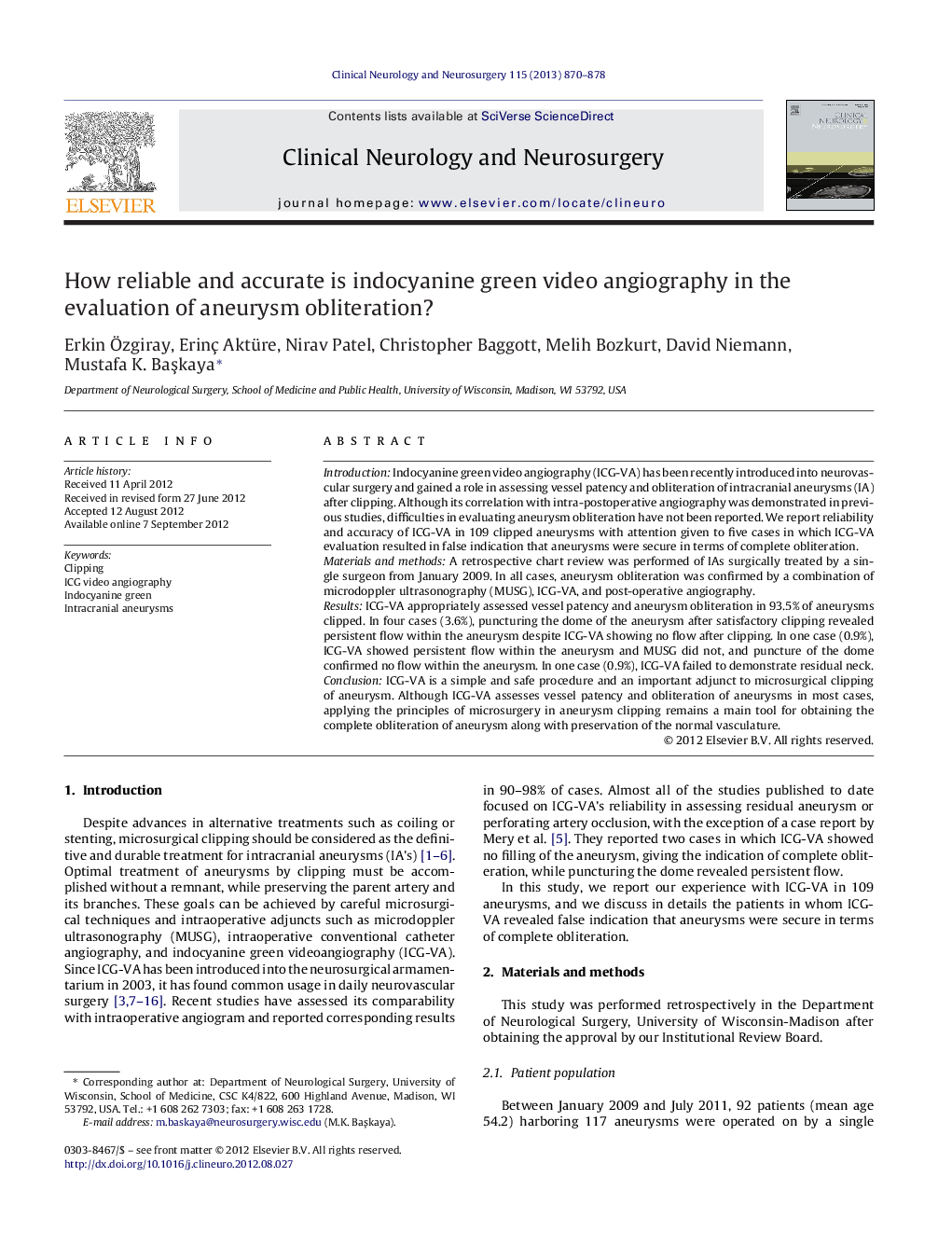| Article ID | Journal | Published Year | Pages | File Type |
|---|---|---|---|---|
| 6006712 | Clinical Neurology and Neurosurgery | 2013 | 9 Pages |
IntroductionIndocyanine green video angiography (ICG-VA) has been recently introduced into neurovascular surgery and gained a role in assessing vessel patency and obliteration of intracranial aneurysms (IA) after clipping. Although its correlation with intra-postoperative angiography was demonstrated in previous studies, difficulties in evaluating aneurysm obliteration have not been reported. We report reliability and accuracy of ICG-VA in 109 clipped aneurysms with attention given to five cases in which ICG-VA evaluation resulted in false indication that aneurysms were secure in terms of complete obliteration.Materials and methodsA retrospective chart review was performed of IAs surgically treated by a single surgeon from January 2009. In all cases, aneurysm obliteration was confirmed by a combination of microdoppler ultrasonography (MUSG), ICG-VA, and post-operative angiography.ResultsICG-VA appropriately assessed vessel patency and aneurysm obliteration in 93.5% of aneurysms clipped. In four cases (3.6%), puncturing the dome of the aneurysm after satisfactory clipping revealed persistent flow within the aneurysm despite ICG-VA showing no flow after clipping. In one case (0.9%), ICG-VA showed persistent flow within the aneurysm and MUSG did not, and puncture of the dome confirmed no flow within the aneurysm. In one case (0.9%), ICG-VA failed to demonstrate residual neck.ConclusionICG-VA is a simple and safe procedure and an important adjunct to microsurgical clipping of aneurysm. Although ICG-VA assesses vessel patency and obliteration of aneurysms in most cases, applying the principles of microsurgery in aneurysm clipping remains a main tool for obtaining the complete obliteration of aneurysm along with preservation of the normal vasculature.
